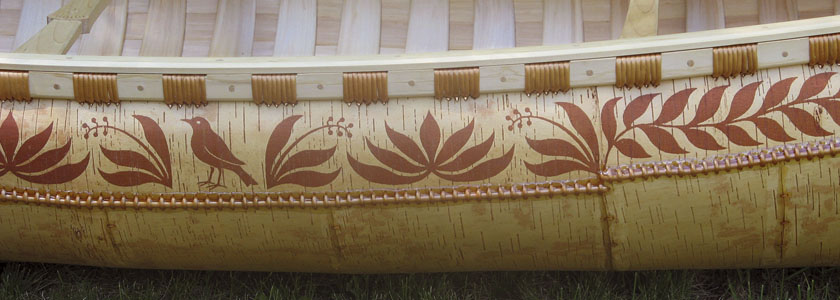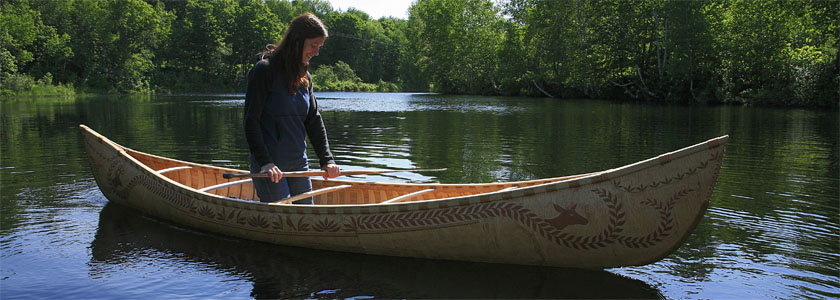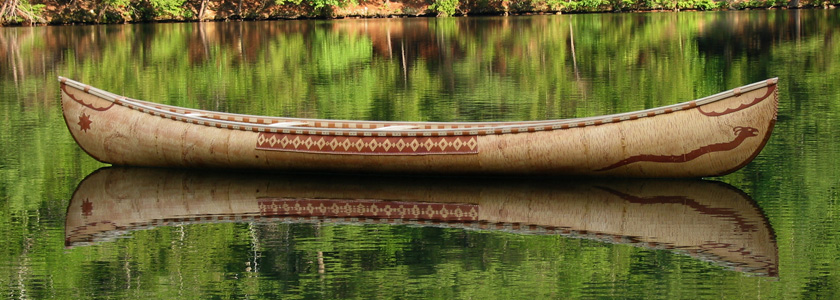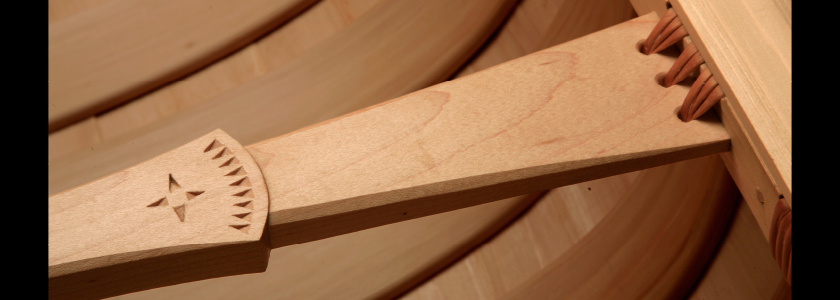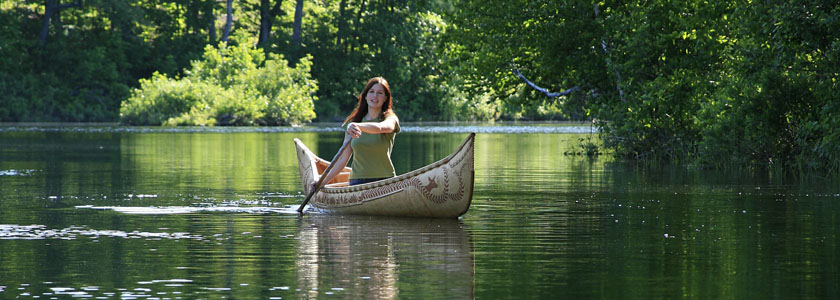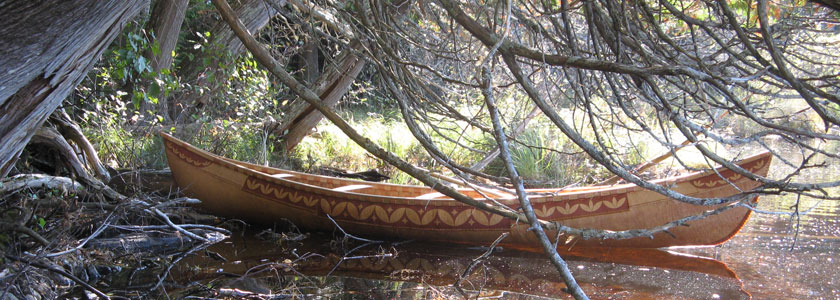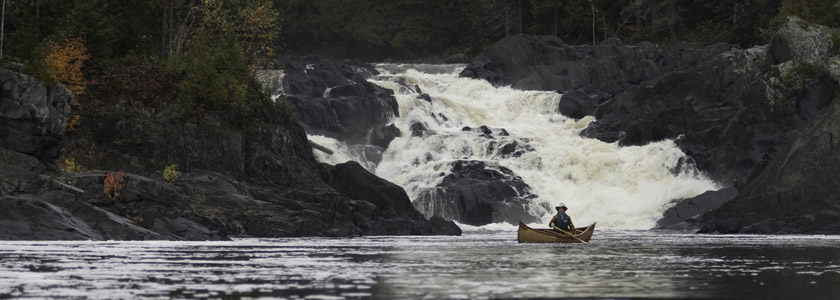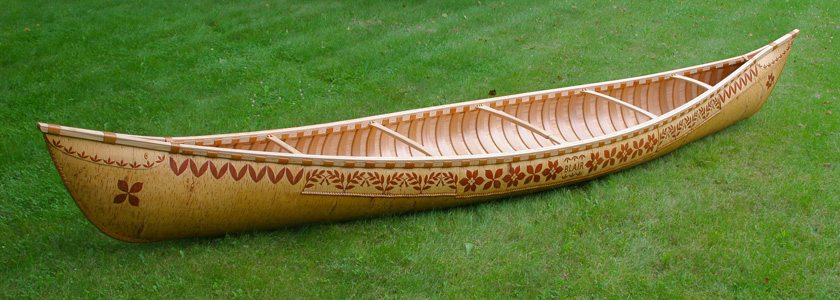Origins
From its origins in the dawn of human habitation of North America, the birchbark canoe embodies the heart and soul of watercraft in the woods and waters of the north country.

The Penobscot of Maine trace their knowledge of it to Gluskabe, a mythical folk hero who formed himself from the dust that settled from the act of creation. When the French and English arrived in New England, they wondered at this marvelous craft which the natives paddled in circles around their longboats, and which was light enough to be carried by one person for great distances overland.

The process of constructing a birchbark canoe is unchanged since the distant past, yet radically different from the methods of construction used in other types of wooden boats, including its own offspring, the wood-and-canvas canoe. Central to this process are the materials from which this craft is made: birchbark, thick, pliant, and tough; cedar, springy and light, which with practice can be precisely split; and spruce roots, the sinews of the forest.
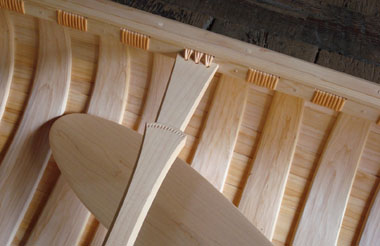
The old-growth forests in which these materials can be found are disappearing rapidly. With them dwindle the chances of preserving and sustaining this traditional craft which so perfectly combines the talents of humanity with the gifts of the forest, to the enrichment and grace of both.
Contemporary Birchbark Canoe Builder
Steve Cayard builds authentically styled birchbark canoes in the tradition of the Penobscot, Passamaquoddy, and Maliseet tribes of Maine and New Brunswick. They are among the Native American tribes collectively known as the Wabanaki, or “People of the Dawnland.” These people have inhabited the coastal and riverine environment of this region for at least the last twelve thousand years. Their intimate knowledge of its woods and waters led to the development of a superbly adapted form or watercraft, which became their chief means of transportation—the Wabanaki birchbark canoe.
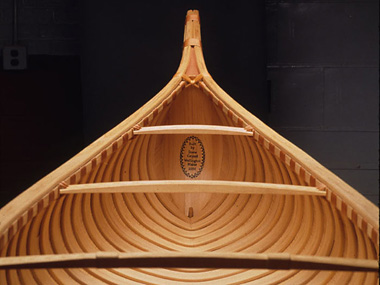
Steve is a non-native, self-taught builder who, through his careful research and passion for the craft, and with his appreciation of its cultural context, has developed strong ties with the native tribal communities and builders whose traditions he borrows from. In return, he has offered his knowledge and skills to native groups who have sought him out to help them further their own efforts to revitalize this central facet of traditional Wabanaki culture.
Steve’s birchbark canoe building is an outgrowth of his love of the woods. This feeling is seen in the artistry he puts into his canoes, and is epitomized by the graceful designs he etches on them in the dark “winter bark,” which is birchbark gathered when the tree is dormant. This ancient art form offers an opportunity for decoration that Steve uses not only to reflect traditional Wabanaki motifs, but also to express his own vision of the natural world, in the belief that each generation must infuse its own spirit into the tradition to keep it vital.
Steve builds birchbark canoes on commission, and conducts research at museums, where he also offers consultation and conservation services. He teaches birchbark canoe building workshops in both the native and non-native communities. Steve lives on an off-the-grid, backwoods homestead with his family in Wellington, Maine.

